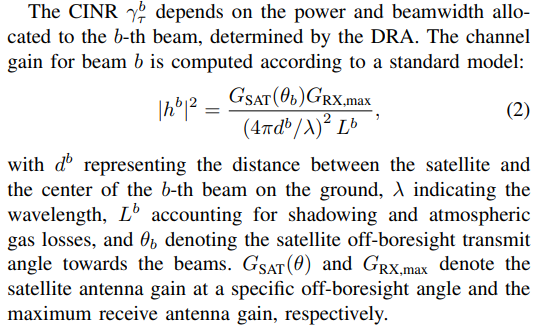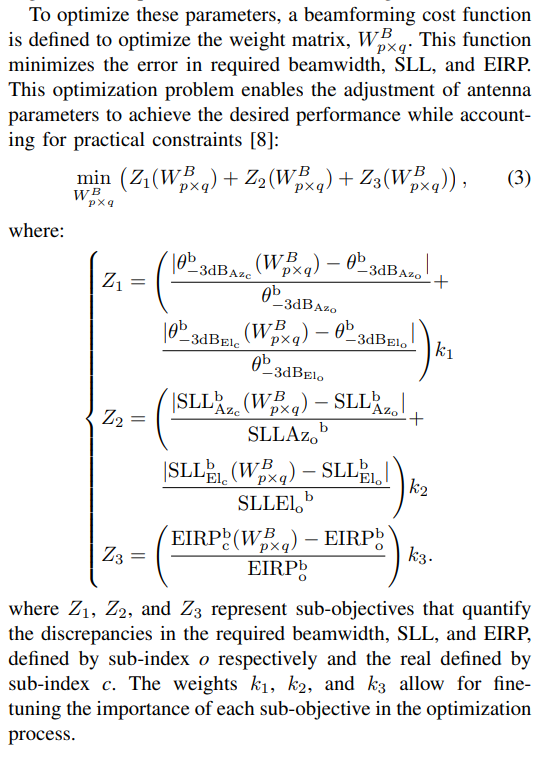This paper is available on arxiv under CC BY-NC-SA 4.0 DEED license.
Authors:
(1) Flor Ortiz, University of Luxembour;
(2) Juan A. Vasquez-Peralvo, University of Luxembour;
(3) Jorge Querol, University of Luxembour;
(4) Eva Lagunas, University of Luxembour;
(5) Jorge L. Gonzalez Rios, University of Luxembour;
(6) Marcele O. K. Mendonc¸a, University of Luxembour;
(7) Luis Garces, University of Luxembour;
(8) Victor Monzon Baeza, University of Luxembour;
(9) Symeon Chatzinotas, University of Luxembou.
Table of Links
- Abstract & Introduction
- System Model and Problem Statement
- Antenna Design and Training Data Generation
- Supervised Learning for Adaptive Beamforming
- Numerical Results
- Conclusions, Acknowledgment, and References
II. SYSTEM MODEL AND PROBLEM STATEMENT
In this section, we present the system model and outline the optimization problem for our GEO satellite system. Our system comprises a single multibeam satellite that serves a wide Earth region with B spot-beams. The focus lies on the forward user link, with K single-antenna user terminals (UTs) distributed across the satellite’s coverage area. The satellite’s payload features versatile power management using a traveling-wave tube amplifier (TWTA) with adaptive input back-off (IBO) and beamwidth control using a DRA. Frequency reuse strategies are implemented to mitigate cochannel beam interference.




Our system incorporates a DRA with N × N radiating elements to control the power, beamwidth, Equivalent Isotropic Radiated Power (EIRP), which depends on the power and beamwidth, Side Lobe Level (SLL), and pointing per beam depending on traffic requirements. To determine the number of antenna elements, we consider gain requirements, beam solid angle, satellite position, altitude, and coverage area.


